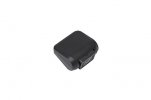Thanks for posting these images
@TonyM. They confirm my initial impression and concern that the design is far less stealthy and problematic to mount than it otherwise could have been. After waiting fully two and a half years since this camera was first announced by jokiin the lens module design was, at least for me, (and a couple of other members) rather underwhelming. Then again, Street Guardian has never been known for design innovation. They tend to copy other cameras or use "public" housings in all their products. In this case they simply copied and slightly miniaturized the basic tube style design Blackvue first intoduced many years ago.
My concern was not the tubular design though, which I like, but the mounting plate seems to be a big part of the problem as I see it. It seems to virtually double the overall footprint of the camera, reduces the possible mounting options, prevents the cam from being mounted right up close to the very top of a windscreen and makes the installation less stealthy. In fact, the mounting plate literally makes its own very noticeable footprint on the glass, separate from the camera which I believe was entirely unnecessary.
I would have liked to have seen perhaps a slightly longer tube with swivels at both ends with the mounting plate behind the camera module, thus eliminating the big extraneous mounting plate. This would have been more stealthy and probably more secure. Cameras with a mount on only one side (like the mini 00X series, for example) have a tendency to vibrate on rough roads. Living on a rural dirt road on a mountain and having tested such cameras extensively, I've become keenly aware of this issue.
Something more along the lines of this older rear camera design from Lucas would have been more of what I was hoping to see.
View attachment 52407



